How to Launch a crowdfunding campaign that will empower your music career
Funding your own music career is a surprisingly expensive venture. Even with the technology available today making it easier than ever to create and record music there are tons of other expense you must consider. In order to attract the attention you need to be successful you must be able to consistently produce quality content, market it effectively to your target demographic, and attach stunning visuals to it so that it stands out. All of this costs money something many indie artists find themselves in short supply. This “money” issue can push projects back an untold amount of time likely killing any momentum that you have accumulated. Unless you have well-off relatives or friends you can convince to loan you the seed money, finding a solution to this problem can prove futile, enter crowdfunding.
Crowdfunding is the new angel investor, a form of fundraising utilizing digital platforms like social media to raise tons of money in small increments from willing donors. In an Interview I did with Meresha she spoke briefly about how crowdfunding helped her launch her first single. Today you will learn the basics of crowdfunding and what it takes to launch a successful campaign using nothing but the resources available to you.
The first step to every successful campaign is setting a REALISTIC and OBTAINABLE goal.
Setting your RAO Goal

A realistic and obtainable goal, or RAO goal as I like to call them, is essentially a measurable and viewable destination from your current position. For example, an artist who sets a goal to raise $1,500 based on a fan base of 300 people would be considered an RAO goal. It would only require a $5 donation from each fan, a reasonable expectation, rather than setting a goal of $300,000 with the same fan base.
Notice in the first example we were easily able to see the goal for $1,500 as obtainable by calculating the dollar amount required per fan in out fanbase. Essentially we measured our goal and determined it as viewable based on the size of our fan base size. Though in the second example the goal is measurable, we can just as easily rule it as unviewable as it requires a $1,000 donation per fan.
Now, in any case, it should be a simple task of determining your goal as RAO or not. However, it’s not always an easy task of setting a goal.
Accounting for your expenses
The first step to setting your RAO goal is calculating all of the expenses you will incur over the duration of the project. This step can seem simple but it is so easily mishandled. There should be no rounding, guessing, or estimating at this step. Only cold hard number crunching will provide you with an accurate look at how much your venture will cost. In-depth research into your project’s expenses is required, or else, risk running into unaccounted expenses AFTER your campaign is complete. There is nothing worse than you working hard and reaching your donation goal just to realize it is still not enough. For artists who are seeking to use crowdfunding to fund their on-going career (yes! you can do that), you will need to calculate your expenses per month and use that figure to represent your expenses.
The time factor

The other key component for setting an RAO goal is the amount of time you have allotted yourself to reach it. The amount of time you give yourself could easily determine whether a goal is viewable/obtainable or not. Determining your project’s timeline depends on couple factors however, like; Which platform you want to use to launch your campaign (which I get into below), how long you can realistically commit to your campaign, how much money you are trying to raise, and lastly how long can you keep people interested in your campaign. According to Clay Herbert from Crowdfundinghacks.com, the ideal timeline for a campaign is 30 days. Kickstarter seems to agree as their research shows that people who use their platform perform better when setting their campaign timeline to 30 days.
A little room to work
Even after doing great, in-depth research as suggested above there is always the chance of running into unexpected expenses. Things happen! For those things, it is wise to add a security cushion to your goal. Nothing crazy here, just adding an additional 20% to your needed amount should do. As I stated before, there is nothing worse than reaching the end of your campaign only to find that you didn’t ask for enough.
Setting up
After setting your RAO goal your next step is to prepare for your campaign. I call this step the setup. Don’t let the name fool, this step can be quite enjoyable as it calls for more of your creative energies than the rest. In this section, you will learn the importance of your artist story and how to utilize it with your campaign. First, however, we will discuss what incentives you will use to entice donors because even in crowdfunding you can’t expect something for nothing.
What’s your incentive
Having awesome incentives ready for your donors is a great way to boost donations but smart artists will also recognize this as a way to boost brand awareness. Incentives for crowdfunding campaigns typically work by first setting your donation levels, then attaching an appropriate incentive or gift to each level.
A donation level is the minimum dollar amount a potential donor must give to obtain a certain gift. For example, for donations ranging between $5 and $10 you could give away a brochure containing artwork and complete tracklist from your upcoming album. For donations ranging between $100 and $200, you could give away the brochure and have the supporters names written on the credits pages. This would work exceptionally well if you are raising the money to release your album.
As the donations get higher so should the quality of your gifts. Amanda Palmer, a punk rock artist who used Kickstarter to fund her album after leaving her label, had great gifts set up for her supporters including an in-home house party where she performed in-home for those who donated $5,000 or more.
Another way your incentives can work is by doing public reveals. With public reveals, for each milestone reached during the campaign, you would reveal something new to your audience. For example, if your goal is to reach $4,000 during your campaign for every $1,000 reached you could reveal ¼ of your album cover until you reach your goal in which it would be revealed in its entirety.
Think of creative ways to incorporate your brand with your gifts. Attaching your logo or likeness to merchandise is a go-to method for many artists but don’t stop there. The more creative your incentives are the more exposure and attention your brand is likely to receive.
Develop your story
Your story is one of the most important parts of your brand’s success. It tells the world about who you are, where you’ve come from, and where you are going. When your fans decide to purchase your tracks, they’re not just buying your music they’re buying into you. In the book Secrets of closing the sale, the author Zig Ziglar teaches that a consumer’s purchasing decision are based more on emotion than logical reasoning. Your story will be your tool to help you reach audiences on an emotional level. Every artist has their own unique story, yes even you. If Identifying your story is proving itself to be more of a task than you bargained for then the tips I have provided below will help guide you to it.
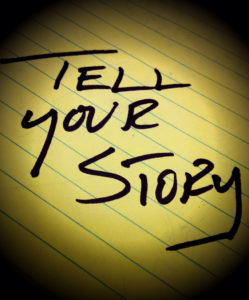
Finding your story
The first step to finding your story is knowing that you have one worth telling. Your life may seem uninteresting to you but that’s because you’re living it! The struggles, successes, ups, and downs you experience seem routine to you but they are not to everyone else. Look at your life through new eyes. The events in your life that you are underestimating could be the emotional trigger you need to reach your goals.
Your Journey
Your journey is compiled of the events and circumstances that have led you to the point in you are currently at in your career. Your journey is the bridge between you and your audiences, don’t be ashamed of it. Nobody’s journey is glamorous, they are riddled with mistakes, embarrassments and failures, that’s why they resonate so well with audiences because EVERYONE has experienced them. Recently one of my colleagues and close friends approached me about an idea for a book he wanted to create. I agreed to take him on as a client and we quickly began working on it. He created an outline that a reviewed, and though it was surprisingly detailed (most people don’t know how to write a proper outline) I noticed it lacked something. Though it was exceptionally well thought out it lacked the personal touch necessary to reach his audience. I suggested we replace some of the “facts” with personal examples from his own life. Though initially hesitant he got on board with the idea and we began sifting through his memories until we identified the best examples to insert into the chapters. A week later and unbeknownst to me my client had sent the rough draft of chapter one too many of his followers. (Thank God it was at least proofread) Though hardly complete and containing many conceptual errors he was receiving massive positive feedback. Before I knew it I was on the phone with complete strangers listening to how great the chapter was and how ready they were to see a finished product. When I asked what they liked the most about it the answers were unanimous. The stories he told struck a chord, despite the gaping flaws!
Your journey connects you with the rest of the world. We all have ups and downs, hopes and dreams in our lives. Finding personal stories that will connect with others can seem like a daunting task. But here is a shortcut. Think of situations you have experienced that stir up powerful emotions inside of yourself first! That should make things easier, you are an artist after all. Here is a rule I use in my writing. If I question whether to put a story in a book or article or not for an emotional reason, then it MUST go in. If it genuinely hurts you, your audience will feel it too and respond by supporting you and your music.
Get going
Outlined above is just about everything you need to consider when you prepare to embark on your crowdfunding campaign. First, you must really consider your needs and desire in order to set an RAO goal for your campaign. Next, you must find your story and develop it so that it reaches your audience on an emotional level. In this section, you will learn how to really get going by identifying which crowdfunding organization you will run with and how to launch properly.
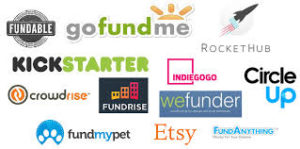
Which crowdfunding platform to choose
This question is a doozy. There are so many platforms out now to choose from you may get dizzy just scrolling through page 1 of your google search. However, not all platforms are made equal! Some platforms are geared towards specific industries and niches while others are suited for a more general crowd. To help cut through the noise and spare my word count, I have narrowed down the platforms to only the top three used by independent musicians around the world. I will give you a brief description of their benefits and provide a link so that you can search for yourself and find out which one is best for you.
The most popular crowdfunding platform credited with over 20,000 success stories since the release of their music category in 2009. You have to set a deadline of 1-60 days after the launch to meet your goal. If you don’t meet your goal by your deadline, you get nada. If your project is successfully funded, Kickstarter takes a 5% fee of total funds collected, plus 3%-5% to Amazon Payments, which processes contributions. You are paid after a 14-day window has passed after your deadline date.
Kickstarter won’t accept just anyone – they only accept roughly 60% of the 2,000+ projects that apply every week. However, they are focused on projects of an artistic or creative nature, so the platform is friendly to musicians.
Experience is on the side of those who choose this platform as it is the oldest of the three. Your deadline is 1-120 days after the launch to meet your goal. You can choose ‘Flexible Funding’ or ‘Fixed Funding.’ If you choose ‘Flexible Funding,’ they take only 4% of the total if the goal is met, and 9% of the total if it’s not, plus additional processing fees of 2.9%. If you choose ‘Fixed Funding,’ like Kickstarter, you’ll be charged 4% if you reach your goal but receive zero funds if you don’t. Payment is usually within 15 days after your deadline passes.
Although they organize their site and search tools well, the fact that they accept anyone – including individuals seeking funds for a new car – makes it hard to get noticed through it all.
This platform is unique from the others as it allows you to fund ongoing projects on a regular basis. Great for those who do not have a set project but still need money to continue to produce music. You can choose a ‘per month’ campaign or ‘per creation’ campaign. You always want to fill out as much as possible: a full profile is a welcoming profile!
From there, you build your ‘subscription levels’: $1 can mean access to the feed on Patreon, $2 can give patrons early access to videos, $5 can allow patrons to join exclusive Google Hangouts with you, and the list goes on. It can be whatever your heart and your fanbase desire.
It’s completely free to signup. Patreon sends funds collected to you on the 5th of the month, right to your bank account. Patreon does take 5% and any additional credit card fees, ranging from 2% to 4%.
Discoverability friendliness is very low for anyone browsing on the site. When you select ‘Music’ as a category, only 12 featured projects pull up. When any type of creator is able to sign up for free, it can be challenging for creators to get noticed. (Credit DIYmusician.com for full original article click the link provided.)
Each site allows you to create a free page, post a video explaining your project and set your own deadlines based on their individual guidelines. Each platform has their own pros and cons and it really depends on your particular needs and goals as to which is best for you. Follow the links provided to get a complete overview and feel for each site. Below I have provided links to additional sites that have similar comparisons for each site and more!
Reaching out
An often overlooked part of crowdfunding is PR outreach. Getting the attention of media outlets and blogs that cover new music or indie artists (such as this one) can expose your brand to an audience that would have otherwise been oblivious to your music and campaign. One of the most efficient ways of gaining media attention is with press releases.
Press releases
A press release is a news article, written with the goal of piquing public interest in an organization, product, or event. Press releases are a great strategy for spreading the word to potential new supporters for your project. Crowd101.com has a great article on how to write your own irresistible press release. According to the site here is how a press release would work for your crowdfunding campaign
- A one-page crowdfunding press release is written and distributed out to the media through distribution services or individually
- Journalists and others receiving the press release scan hundreds a day to find interesting stories for their viewers and readers
- The journalist or blogger may reach out for more information and to develop an article
- The article or excerpts of the release are published through media, both online and offline and have the potential of reaching thousands and even millions of people
Pretty straightforward! The article referenced above even provides info on companies like 24-7PressRelease.comand eReleases.com that can write your press release for you no matter what your budget may be.
It should be noted that journalists are constantly flooded with press releases on a daily. Your release should be creative and stand out from the crowd. Find ways to inject your own artistic creativity into your release for the best results. If you have adequate writing ability and want to try writing your own press release Krowdstr has a great template that you can follow. Click the link provided and get started!
Closing out
Starting your own crowdfunding campaign can have enormous benefits for your music career. A successful campaign can not only provide the financial capital necessary to bring a project to life or jump start your music career. It can also bring much-needed exposure to you and your music with just a little effort and creativity. By developing your story you can touch the emotional triggers in your target audience to gain support. Having great incentives prepared for your backers is almost guaranteed to boost contributions. Apply some strategy and you can turn your incentives into marketing tools to raise awareness of your brand. After choosing your platform and crafting an attention-grabbing press release you can focus all your attention on reaching the RAO goal you have set for yourself. When it’s all said and done your campaign will push your career forward! Even when you run into the naysayers who turn down the opportunity to support your project you can turn it into a learning experience. Find out why they decided not to support and learn from it. It will only be a negative experience if you let it be. If you find this article helpful like and share on your social networks. If you have questions or see something that could be added please feel free to leave a comment below. Thanks!

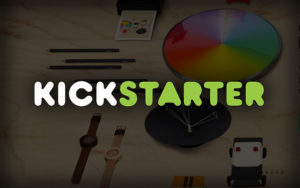

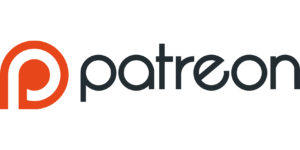
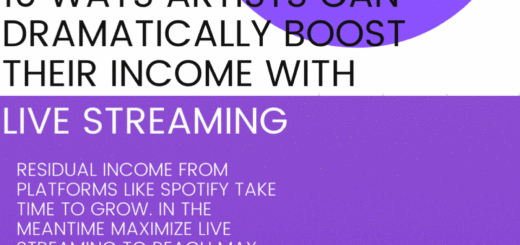

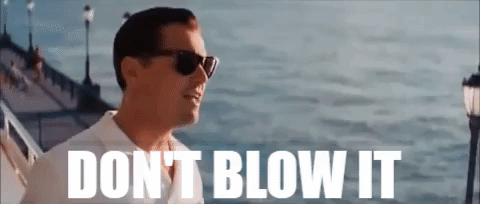
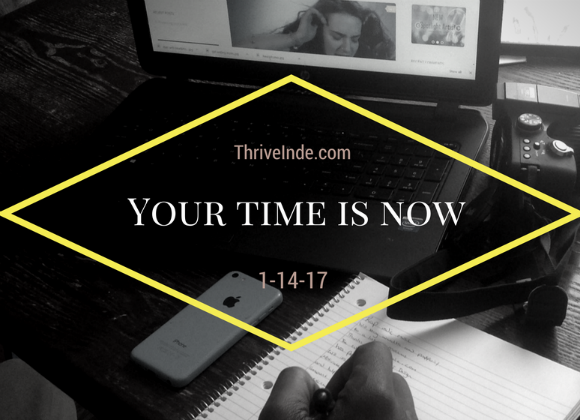


Recent Comments